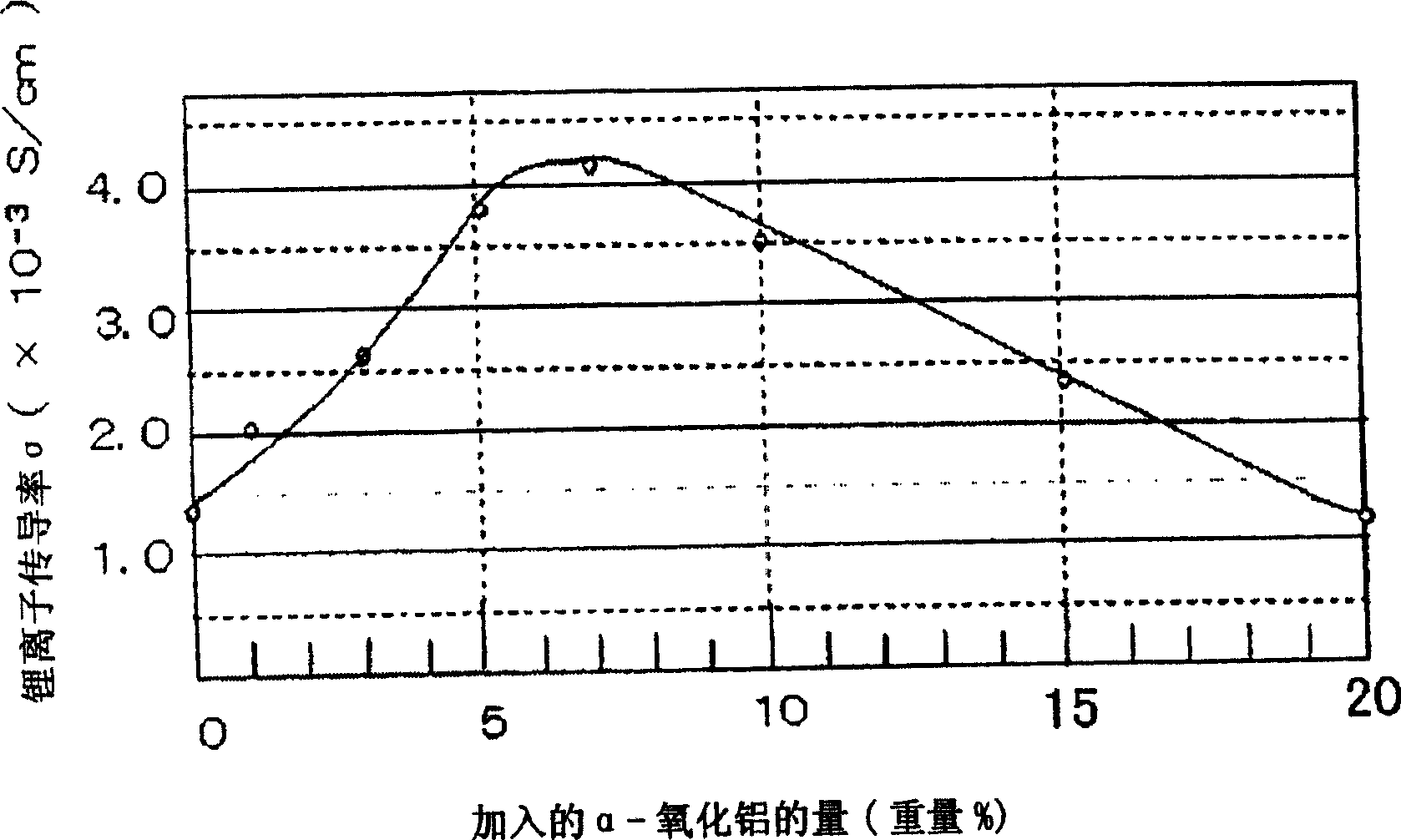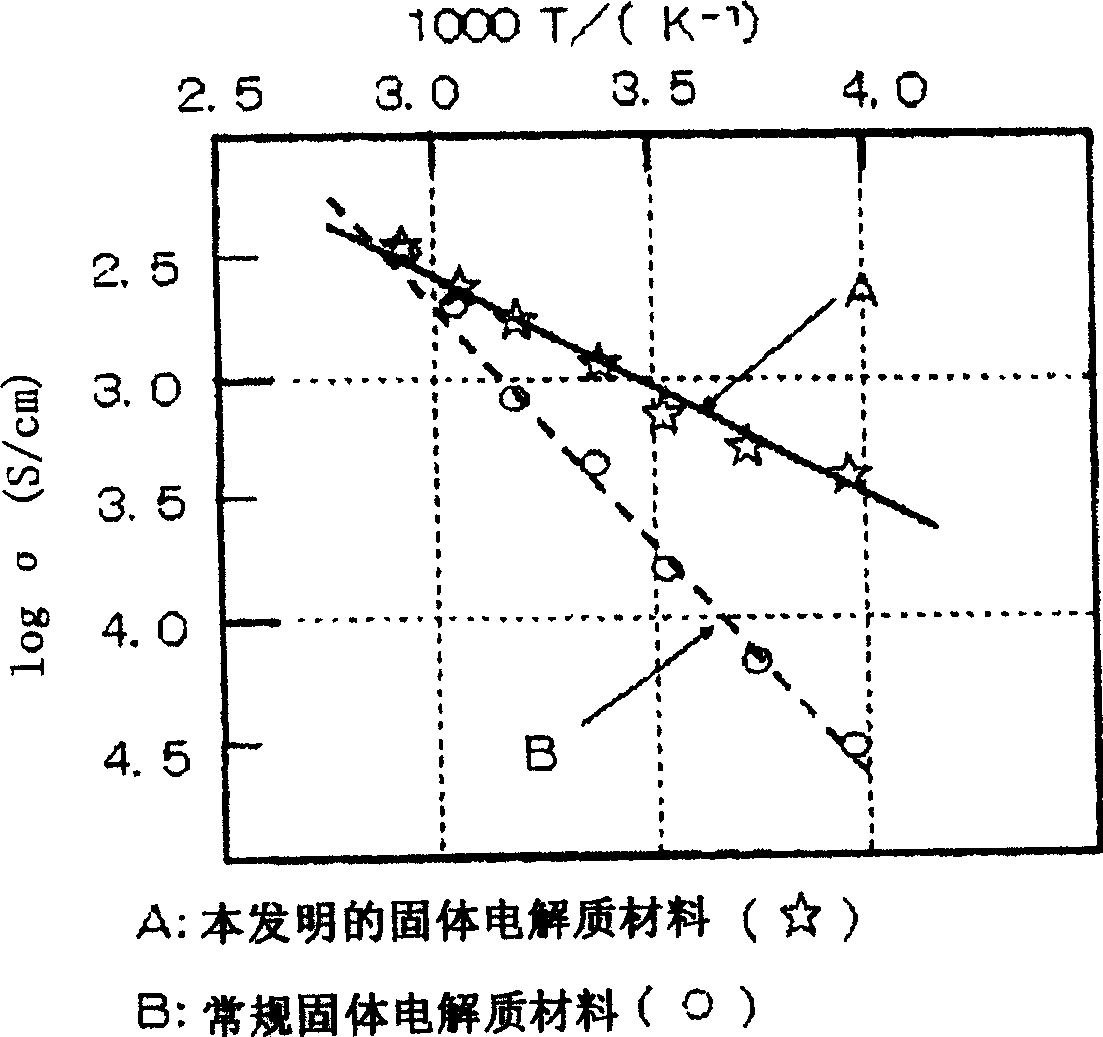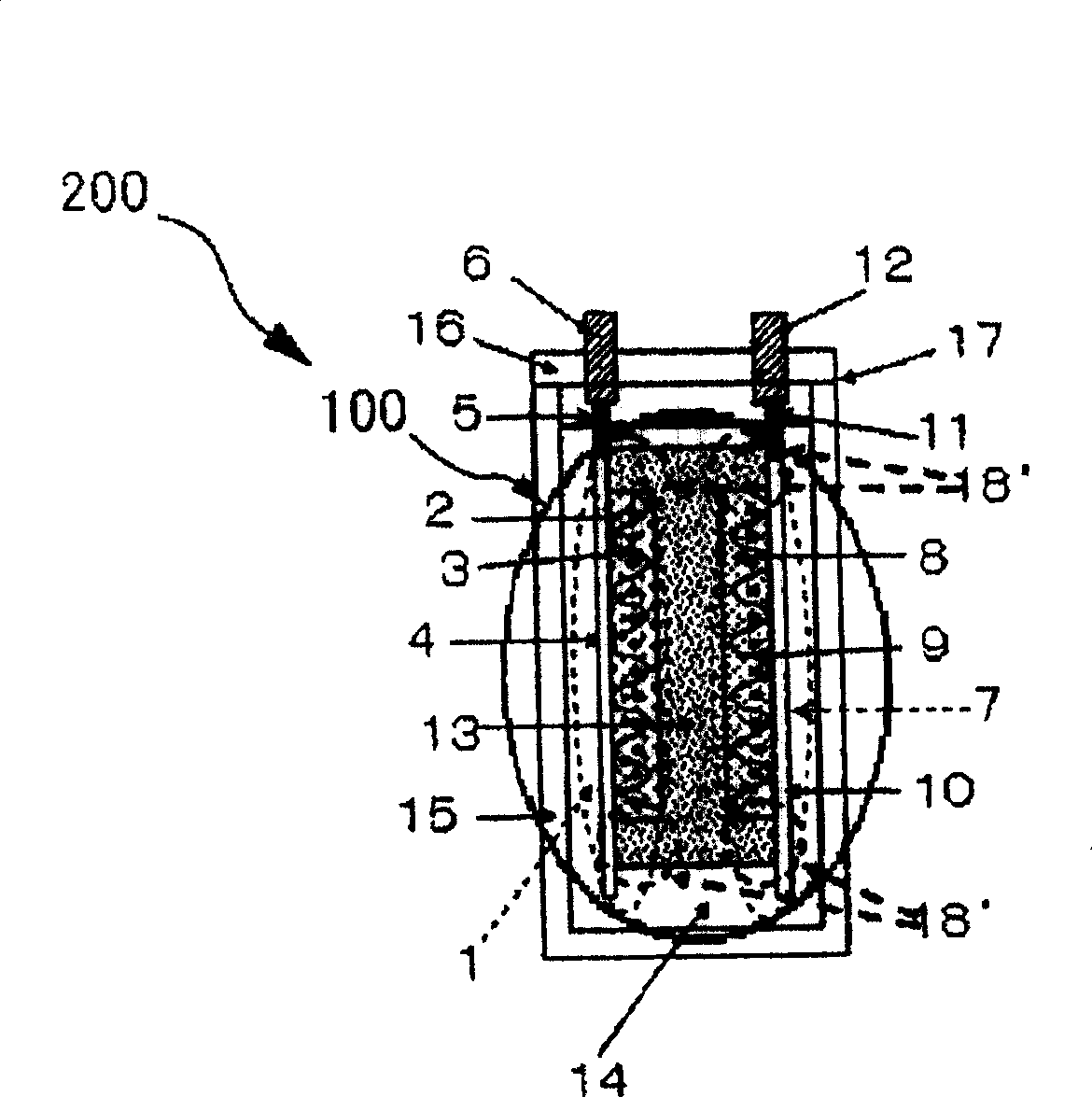Solid electrolyte material, battery device and all-solid lithium secondary battery
A technology of solid electrolyte and electrolyte layer, which is applied to batteries with solid electrolytes, non-aqueous electrolyte batteries, non-aqueous electrolyte batteries, etc., can solve the problems of hard solid electrolyte materials and difficulty in reliably preparing electrodes.
- Summary
- Abstract
- Description
- Claims
- Application Information
AI Technical Summary
Problems solved by technology
Method used
Image
Examples
Embodiment 1
[0074] First, the Li 2 S-SiS 2 -Li 3 PO 4 The constituted lithium ion conductive glass is used as a sulfide-based lithium ion conductor as a starting material of a solid electrolyte material. In addition, α-alumina is used as the insulating fine particles. Then, according to the method described above, a solid electrolyte material was prepared by mixing lithium ion conductive glass with α-alumina at different ratios by weight. Then, in each solid electrolyte material, lithium ion conductivity was measured using a predetermined method. The results are shown in figure 1 middle.
[0075] figure 1 is a graph showing the relationship between the added amount of α-alumina and the lithium ion conductivity of the prepared solid electrolyte material. At this point, it should be noted that, figure 1 All Li-ion conductivity values shown in are measured at room temperature.
[0076] Such as figure 1 As shown in , in a solid electrolyte using a solid electrolyte material i...
Embodiment 2
[0092] First, the Li 2 S-Ge 2 S 2 -P 2 S 5 The constituted lithium-ion-conducting crystalline material is used as a sulfide-based lithium-ion conductor as a starting material for a solid electrolyte material. In addition, α-alumina is used as the insulating fine particles. Then, according to the method described above, a solid electrolyte material was prepared by mixing the crystalline material with 5% by weight of α-alumina relative to the crystalline material.
[0093] Then, by using a predetermined method, lithium ion conductivity of the prepared solid electrolyte material and starting material was measured. As a result, the lithium ion conductivity of the as-prepared solid electrolyte material was 4.3×10 -3 S / cm. On the other hand, the Li-ion conductivity of the starting material is 2.5 × 10 -3 S / cm. The Li-ion conductivity of the as-prepared solid electrolyte material is much higher than that of the starting material.
Embodiment 3
[0095] First, the Li 2 S-P 2 S 5 The constituted lithium ion conductive glass is used as a sulfide-based lithium ion conductor as a starting material of a solid electrolyte material. In addition, α-alumina is used as the insulating fine particles. Then, according to the method described above, the lithium ion conductive glass was mixed with α-alumina at a weight ratio of 5% with respect to the lithium ion conductive glass to prepare a solid electrolyte material.
[0096] Then, by using a predetermined method, lithium ion conductivity of the prepared solid electrolyte material and starting material was measured. As a result, the lithium ion conductivity of the prepared solid electrolyte material was 0.75×10 -3 S / cm. On the other hand, the Li-ion conductivity of the starting material is 0.25 × 10 -3 S / cm. The Li-ion conductivity of the as-prepared solid electrolyte material is much higher than that of the starting material.
PUM
| Property | Measurement | Unit |
|---|---|---|
| ionic conductivity | aaaaa | aaaaa |
| ionic conductivity | aaaaa | aaaaa |
| ionic conductivity | aaaaa | aaaaa |
Abstract
Description
Claims
Application Information
 Login to View More
Login to View More - R&D
- Intellectual Property
- Life Sciences
- Materials
- Tech Scout
- Unparalleled Data Quality
- Higher Quality Content
- 60% Fewer Hallucinations
Browse by: Latest US Patents, China's latest patents, Technical Efficacy Thesaurus, Application Domain, Technology Topic, Popular Technical Reports.
© 2025 PatSnap. All rights reserved.Legal|Privacy policy|Modern Slavery Act Transparency Statement|Sitemap|About US| Contact US: help@patsnap.com



